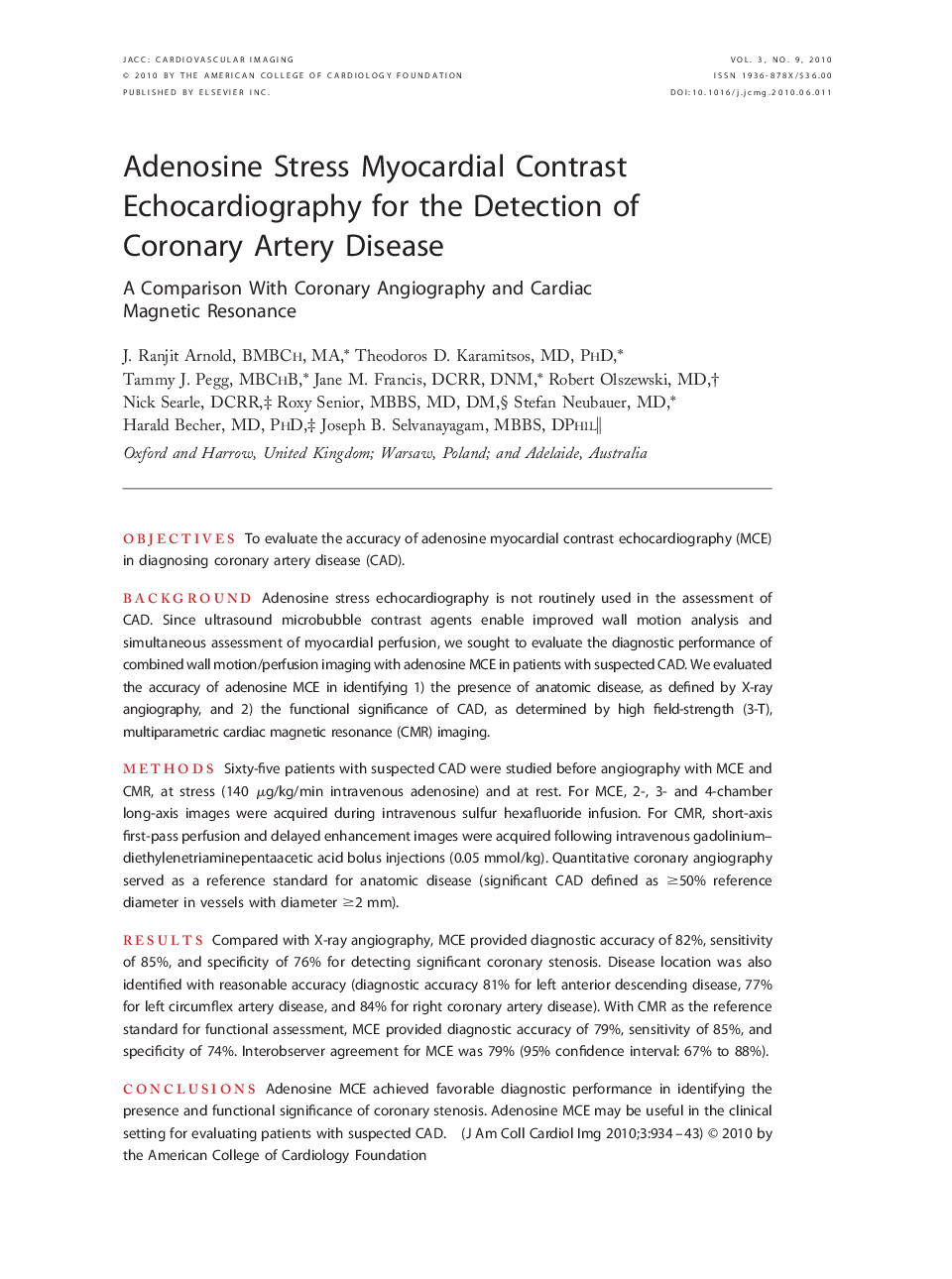| Article ID | Journal | Published Year | Pages | File Type |
|---|---|---|---|---|
| 2939018 | JACC: Cardiovascular Imaging | 2010 | 10 Pages |
ObjectivesTo evaluate the accuracy of adenosine myocardial contrast echocardiography (MCE) in diagnosing coronary artery disease (CAD).BackgroundAdenosine stress echocardiography is not routinely used in the assessment of CAD. Since ultrasound microbubble contrast agents enable improved wall motion analysis and simultaneous assessment of myocardial perfusion, we sought to evaluate the diagnostic performance of combined wall motion/perfusion imaging with adenosine MCE in patients with suspected CAD. We evaluated the accuracy of adenosine MCE in identifying 1) the presence of anatomic disease, as defined by X-ray angiography, and 2) the functional significance of CAD, as determined by high field-strength (3-T), multiparametric cardiac magnetic resonance (CMR) imaging.MethodsSixty-five patients with suspected CAD were studied before angiography with MCE and CMR, at stress (140 μg/kg/min intravenous adenosine) and at rest. For MCE, 2-, 3- and 4-chamber long-axis images were acquired during intravenous sulfur hexafluoride infusion. For CMR, short-axis first-pass perfusion and delayed enhancement images were acquired following intravenous gadolinium–diethylenetriaminepentaacetic acid bolus injections (0.05 mmol/kg). Quantitative coronary angiography served as a reference standard for anatomic disease (significant CAD defined as ≥50% reference diameter in vessels with diameter ≥2 mm).ResultsCompared with X-ray angiography, MCE provided diagnostic accuracy of 82%, sensitivity of 85%, and specificity of 76% for detecting significant coronary stenosis. Disease location was also identified with reasonable accuracy (diagnostic accuracy 81% for left anterior descending disease, 77% for left circumflex artery disease, and 84% for right coronary artery disease). With CMR as the reference standard for functional assessment, MCE provided diagnostic accuracy of 79%, sensitivity of 85%, and specificity of 74%. Interobserver agreement for MCE was 79% (95% confidence interval: 67% to 88%).ConclusionsAdenosine MCE achieved favorable diagnostic performance in identifying the presence and functional significance of coronary stenosis. Adenosine MCE may be useful in the clinical setting for evaluating patients with suspected CAD.
